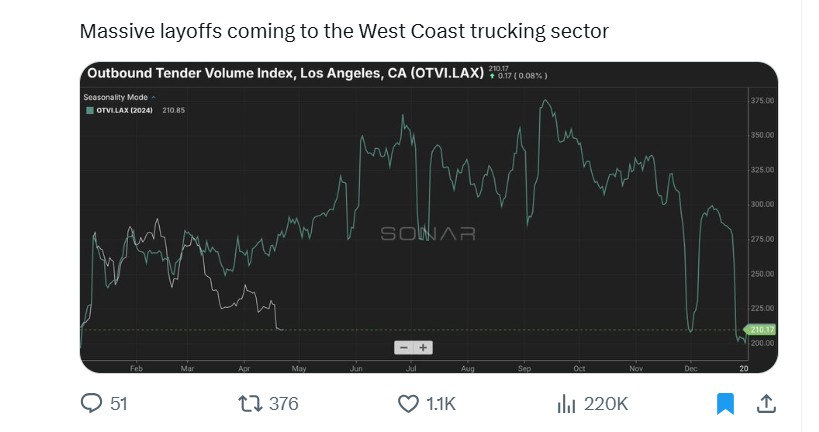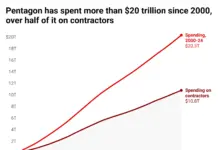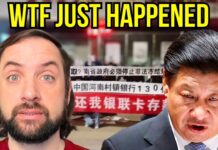By Mike Shedlock,
Orders have been cancelled, but the primary impacts are not felt yet.

Waiting for the Ships
The Seattle Times reports Tariff Tit-for-Tat has Seattle Waiting for the Ships to Come In
Like many of his neighbors near the Seattle waterfront, Alex Smith keeps a close eye on the big container ships crossing Elliott Bay to and from the terminals at the Port of Seattle.
So when Smith, a retired marine components industry professional, noticed fewer vessels coming through starting in mid-April, he worried it was an “early warning system” for the effects of the widening U.S.-China trade dispute.
“It’s frightening, to tell you the truth,” Smith, 80, said of the possible economic costs as the two countries’ escalating tariffs have made trade much more expensive.
Fewer ships coming into the U.S. means companies can’t get components. Retailers and consumers can’t get products. Farmers and manufacturers lose foreign markets. “Everything stops,” Smith said.
“One of my fears is that the local trucking community is going to be the first to be impacted by these changes” in cargo volumes, said Jeff Bellerud, chief operating officer at the Northwest Seaport Alliance, which oversees marine cargo operations at both ports.
That forward buying continued in the first three months of this year. In January, February and March, the ports of Tacoma and Seattle handled nearly 666,000 inbound and outbound containers, a 24% jump from the same period in 2024, port data shows.
Data from the Marine Exchange of Puget Sound, an industry association, shows the number of arriving container ships berthing at Seattle and Tacoma terminals from April 1 to April 24 was down 12% compared with the same period in 2024. Arrivals of ships carrying automobiles in April was down 36%.
Similarly, the number of container vessels arriving or departing from Seattle and Tacoma between April 1 and April 15 was down around 27% compared with the first half of March and by around 24% from April 1-15, 2024, according to a Seattle-area marine services industry insider, who asked to remain anonymous because they weren’t authorized to speak for the company.
And Smith, the amateur ship-spotter, says the drop is pretty clear to anyone actually looking at Elliott Bay.
Already, many scheduled sailings by container vessels bound from other nations to U.S. ports, including Seattle and Tacoma, have been canceled or postponed. Often, U.S. importers are deciding they can’t afford to pay the tariffs.
Media accounts have reported a 30% decline in scheduled sailings out of China for the U.S., which the alliance’s Balaski says is “a fair estimate for what we’re going to see” in terms of impacts on alliance operations, which count on China for around 40% of imported volume.
That jibes with data from SONAR, a freight market data platform: from March 30 to April 21, ocean bookings for containers from international ports to Seattle or Tacoma fell around 29%.
Bookings into the two ports “took a big step down the week of March 30, and then it took another big step down, beginning April 20 and continuing to the present day,” said JP Hampstead, a strategic analyst at Firecrown Media, which owns the trade publication FreightWaves.
Because cargo vessels take several weeks to reach Seattle from Asia, the major effects of that missing cargo won’t materialize until mid-May, when the port expects volume to go “soft.”
But some early ripples have already arrived.
SwaddleDesigns, a Seattle-based baby clothes company that relies heavily on imports from China, paused a container shipment due this month after realizing the 145% tariff would add roughly $300,000 to the shipment’s original $200,000 cost, said Jeff Damir, chief operating officer.
“As a small business, we just don’t have that money sitting around,” Damir said.
Exporters are also feeling the chill of tariffs.
Seattle-Tacoma is one of the largest gateways for exports of hay and the largest for apples and frozen french fries. All are vulnerable to China’s retaliatory tariffs, which have made Chinese buyers less interested in U.S. goods.
“We’ve had exporters actually coming to our terminals to pick up containers of product that they’d already delivered to be exported to China and they’re not going to ship them” due to the Chinese tariffs, Balaski said. ”They’re just picking them up and taking them back and trying to find another home for them.”
Smith, for one, isn’t holding his breath. After years in manufacturing, he knows how global supply chains work and how hard they are to restart.
Even if the White House rolled back the tariffs tomorrow, it would take weeks or months before flow of goods returns to normal, he said.
“This pipeline has been shut off and it’s not like you can turn it back on and it starts up again in a day,” Smith said. “The pipeline is empty.”
Craig Fuller on Trucking

No growth for 7 years and about to collapse.
When Shortages Hit
Craig Fuller on CNBC Video
- Supply chain shortages will probably show up in late-June or July
- Consumers will really feel shortages during back-to-school season
- Ocean voyages, we are currently seeing Covid-like conditions at the extreme
- 500,000 jobs at risk due to lack of imports
The video is a good 2.5 minute play.
Massive Layoffs Coming

Truckers, Avoid LA

No one knows what Trump will do. So no one can rule out stagflation or asset bubble deflation, or anything in between.
Source: https://mishtalk.com
Disclaimer: We at Prepare for Change (PFC) bring you information that is not offered by the mainstream news, and therefore may seem controversial. The opinions, views, statements, and/or information we present are not necessarily promoted, endorsed, espoused, or agreed to by Prepare for Change, its leadership Council, members, those who work with PFC, or those who read its content. However, they are hopefully provocative. Please use discernment! Use logical thinking, your own intuition and your own connection with Source, Spirit and Natural Laws to help you determine what is true and what is not. By sharing information and seeding dialogue, it is our goal to raise consciousness and awareness of higher truths to free us from enslavement of the matrix in this material realm.
 EN
EN FR
FR

























